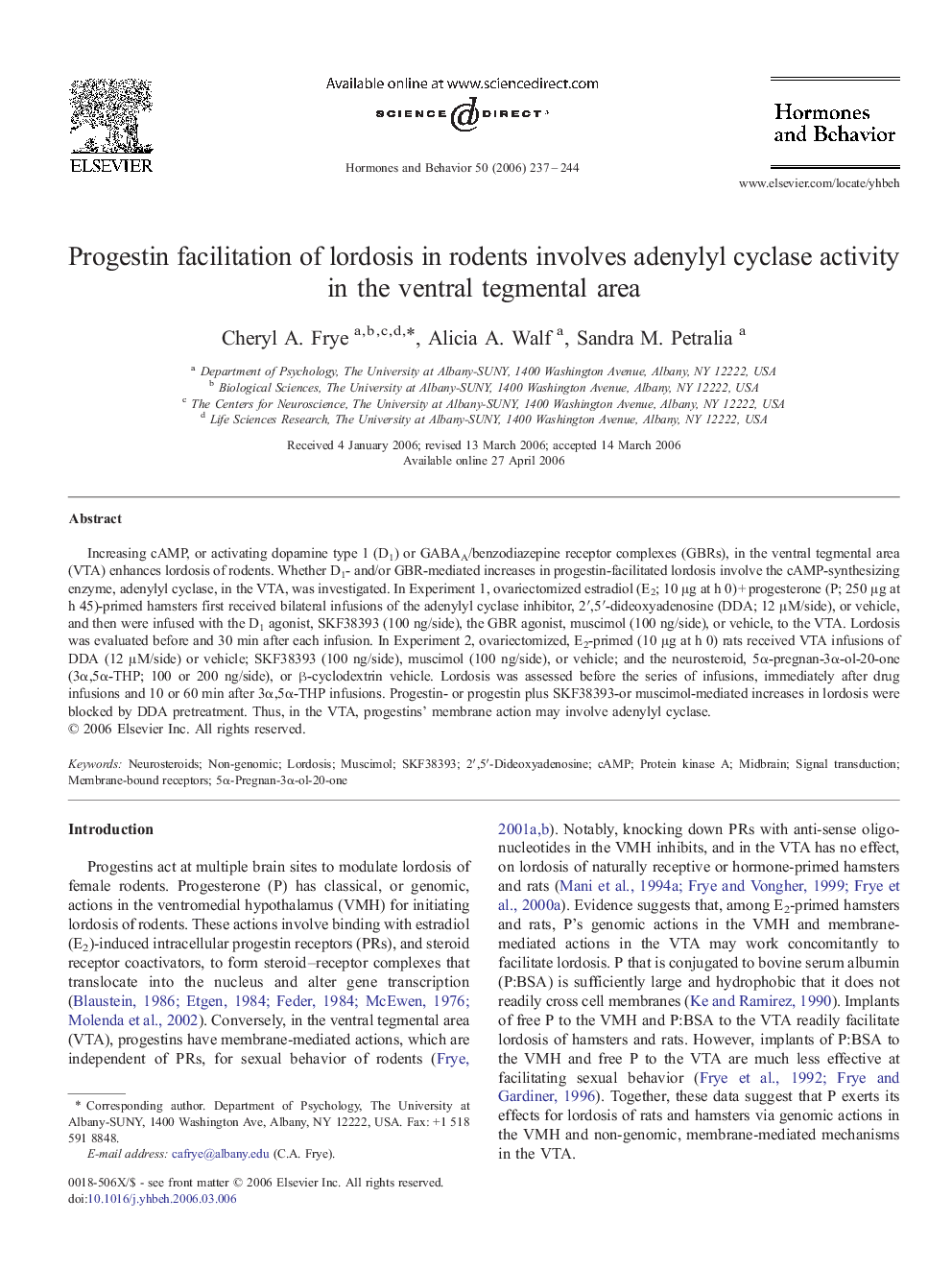| Article ID | Journal | Published Year | Pages | File Type |
|---|---|---|---|---|
| 323920 | Hormones and Behavior | 2006 | 8 Pages |
Increasing cAMP, or activating dopamine type 1 (D1) or GABAA/benzodiazepine receptor complexes (GBRs), in the ventral tegmental area (VTA) enhances lordosis of rodents. Whether D1- and/or GBR-mediated increases in progestin-facilitated lordosis involve the cAMP-synthesizing enzyme, adenylyl cyclase, in the VTA, was investigated. In Experiment 1, ovariectomized estradiol (E2; 10 μg at h 0) + progesterone (P; 250 μg at h 45)-primed hamsters first received bilateral infusions of the adenylyl cyclase inhibitor, 2′,5′-dideoxyadenosine (DDA; 12 μM/side), or vehicle, and then were infused with the D1 agonist, SKF38393 (100 ng/side), the GBR agonist, muscimol (100 ng/side), or vehicle, to the VTA. Lordosis was evaluated before and 30 min after each infusion. In Experiment 2, ovariectomized, E2-primed (10 μg at h 0) rats received VTA infusions of DDA (12 μM/side) or vehicle; SKF38393 (100 ng/side), muscimol (100 ng/side), or vehicle; and the neurosteroid, 5α-pregnan-3α-ol-20-one (3α,5α-THP; 100 or 200 ng/side), or β-cyclodextrin vehicle. Lordosis was assessed before the series of infusions, immediately after drug infusions and 10 or 60 min after 3α,5α-THP infusions. Progestin- or progestin plus SKF38393-or muscimol-mediated increases in lordosis were blocked by DDA pretreatment. Thus, in the VTA, progestins' membrane action may involve adenylyl cyclase.
